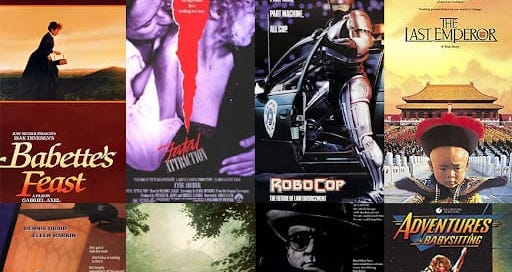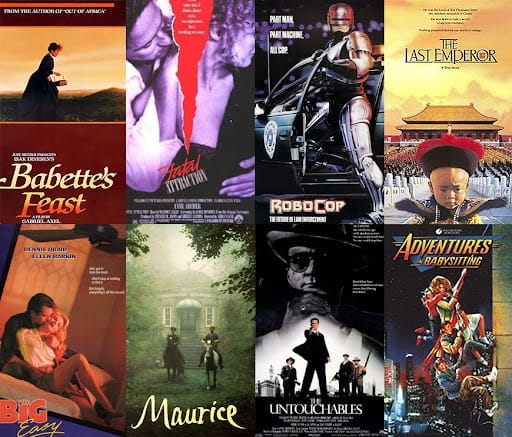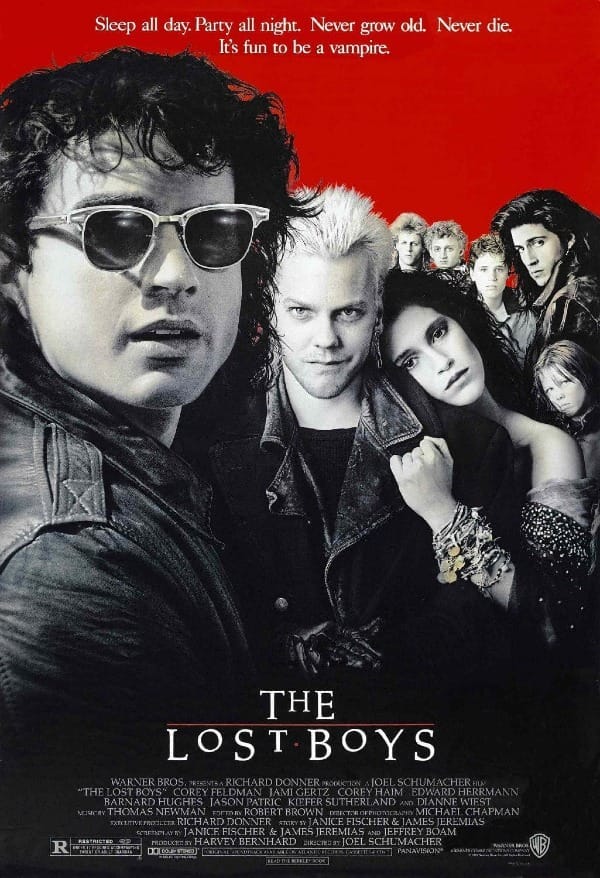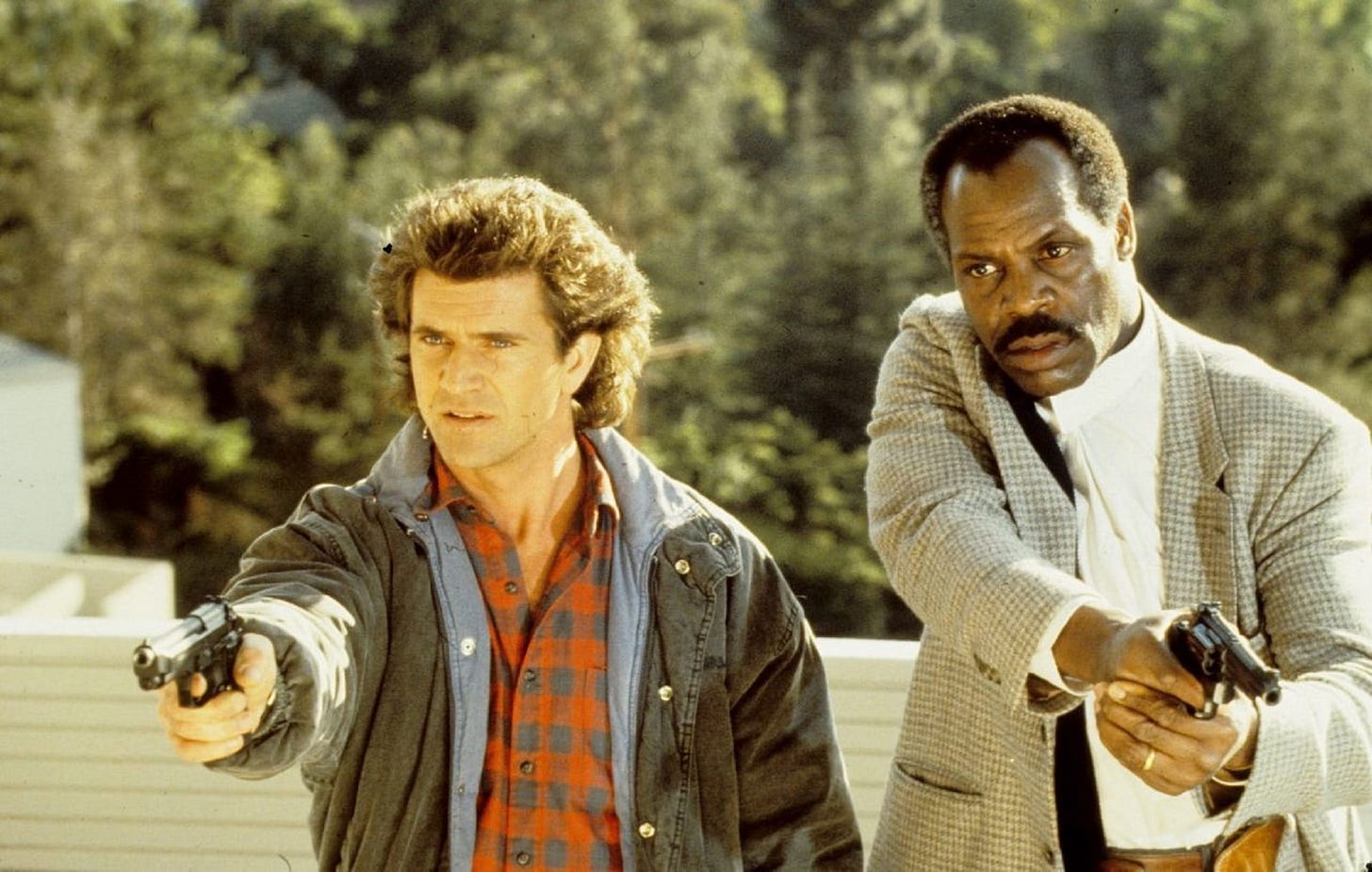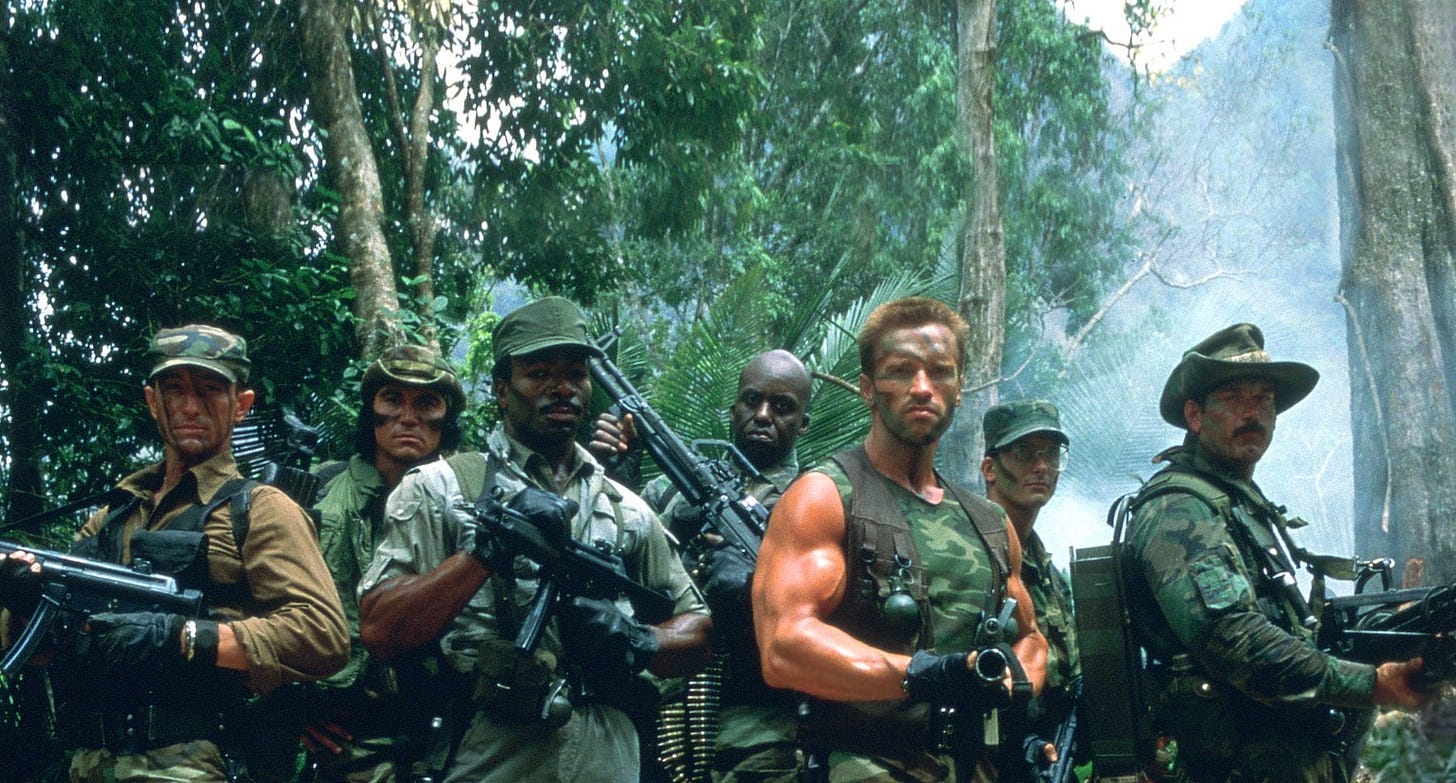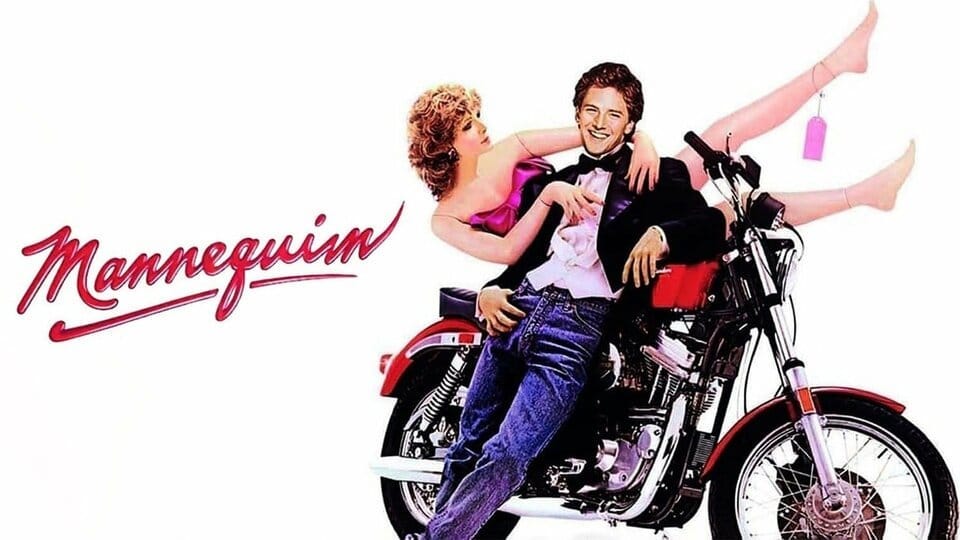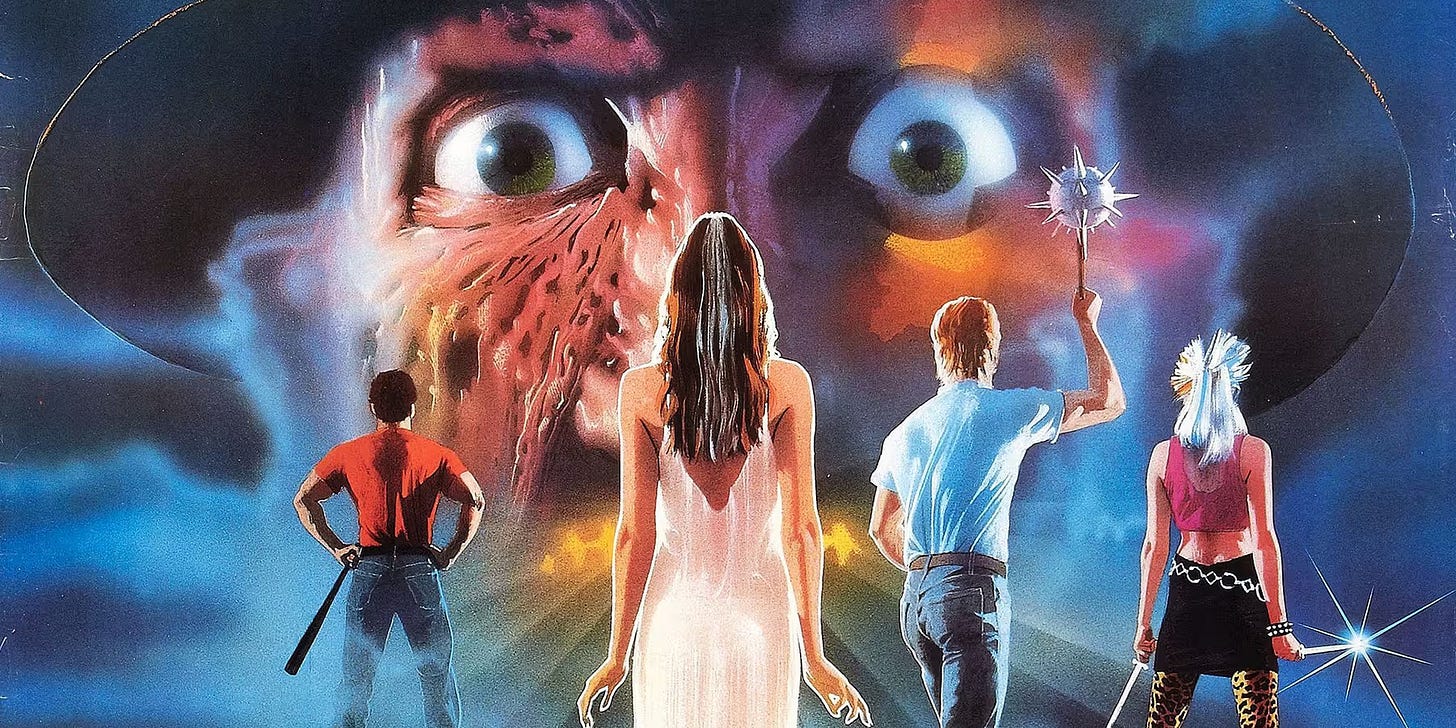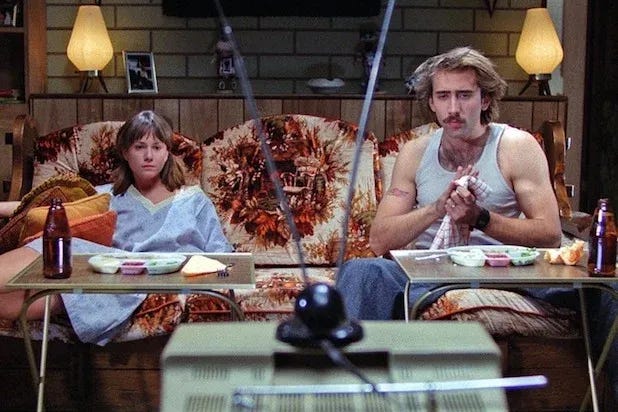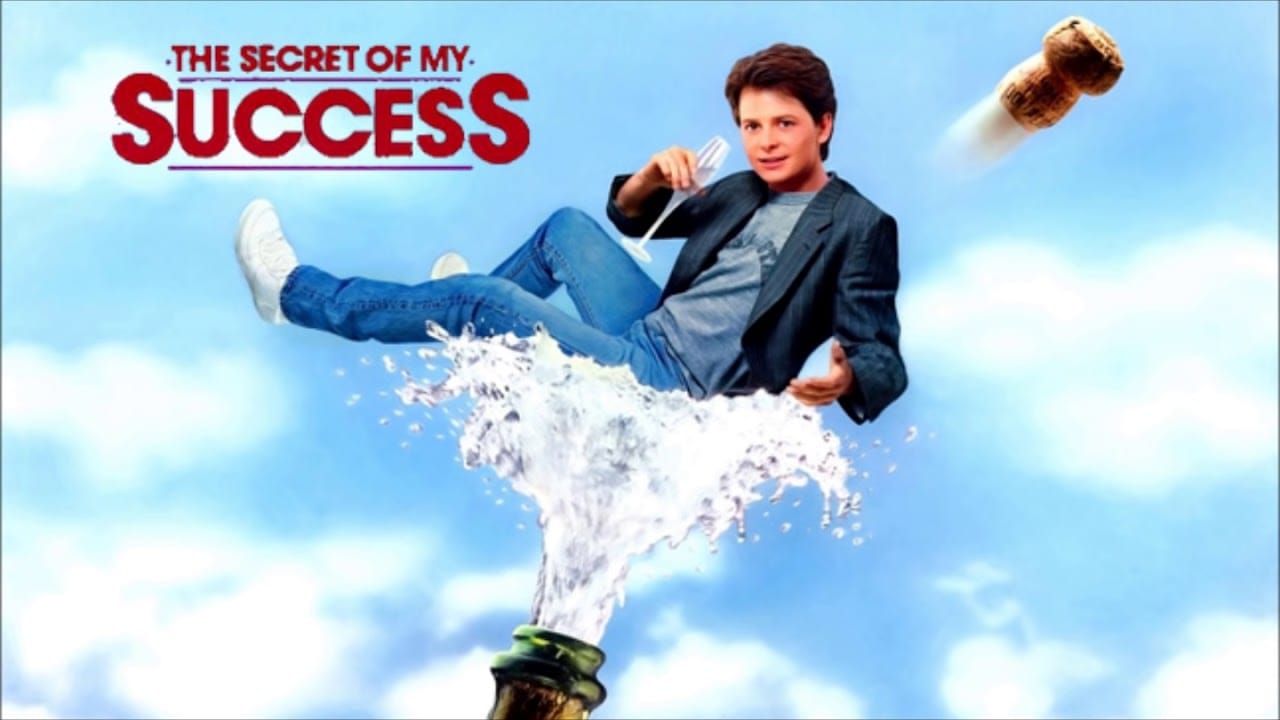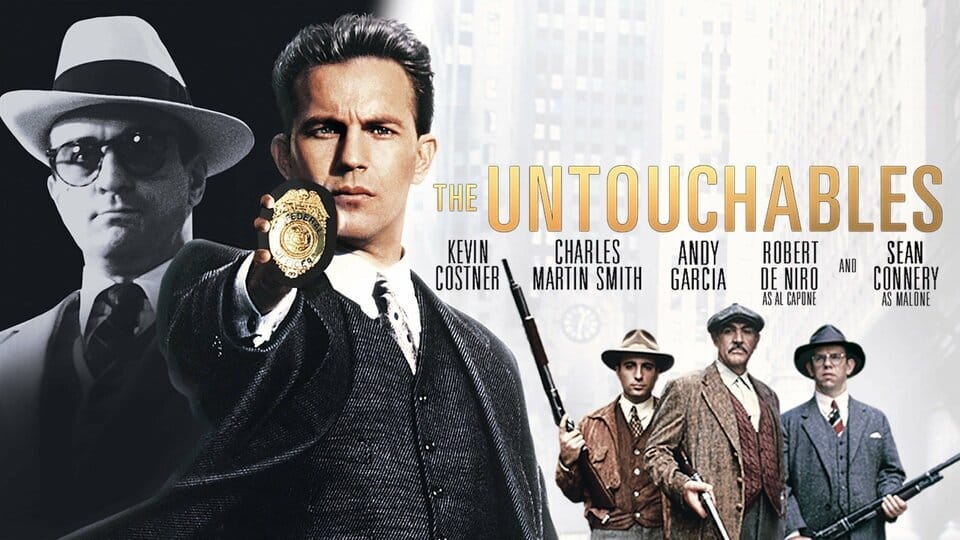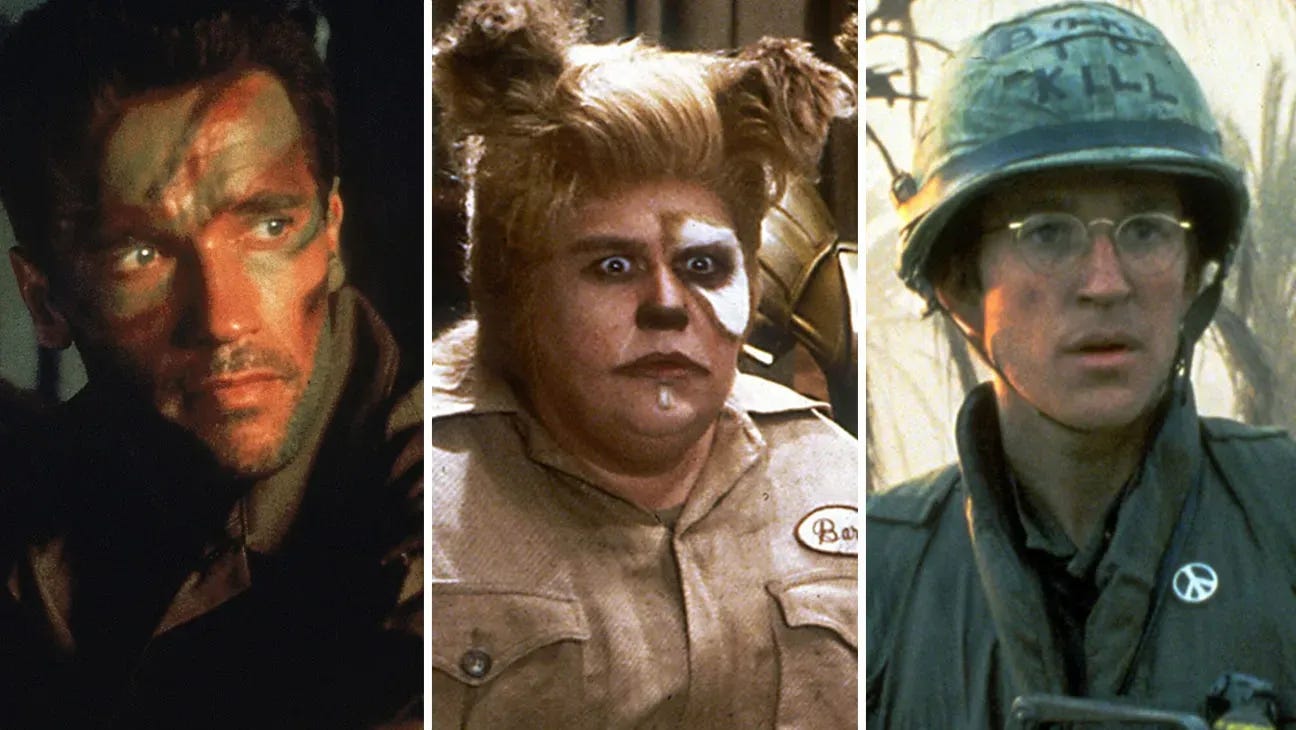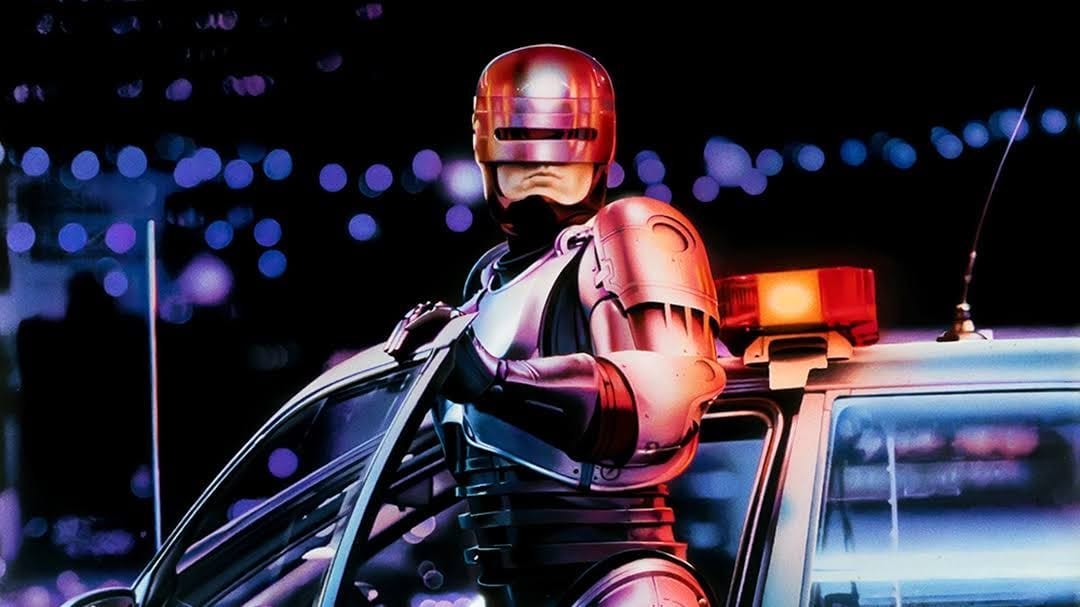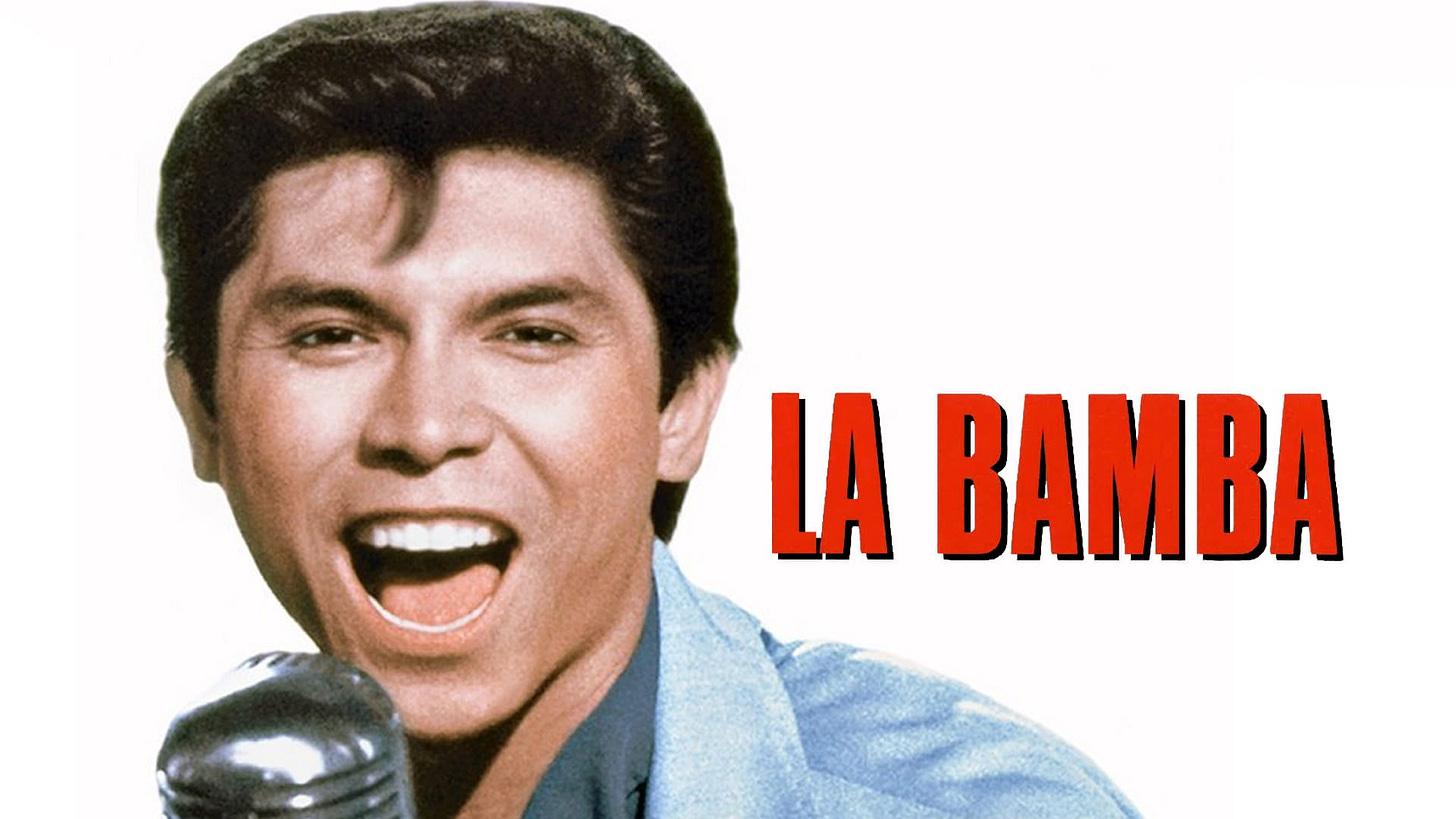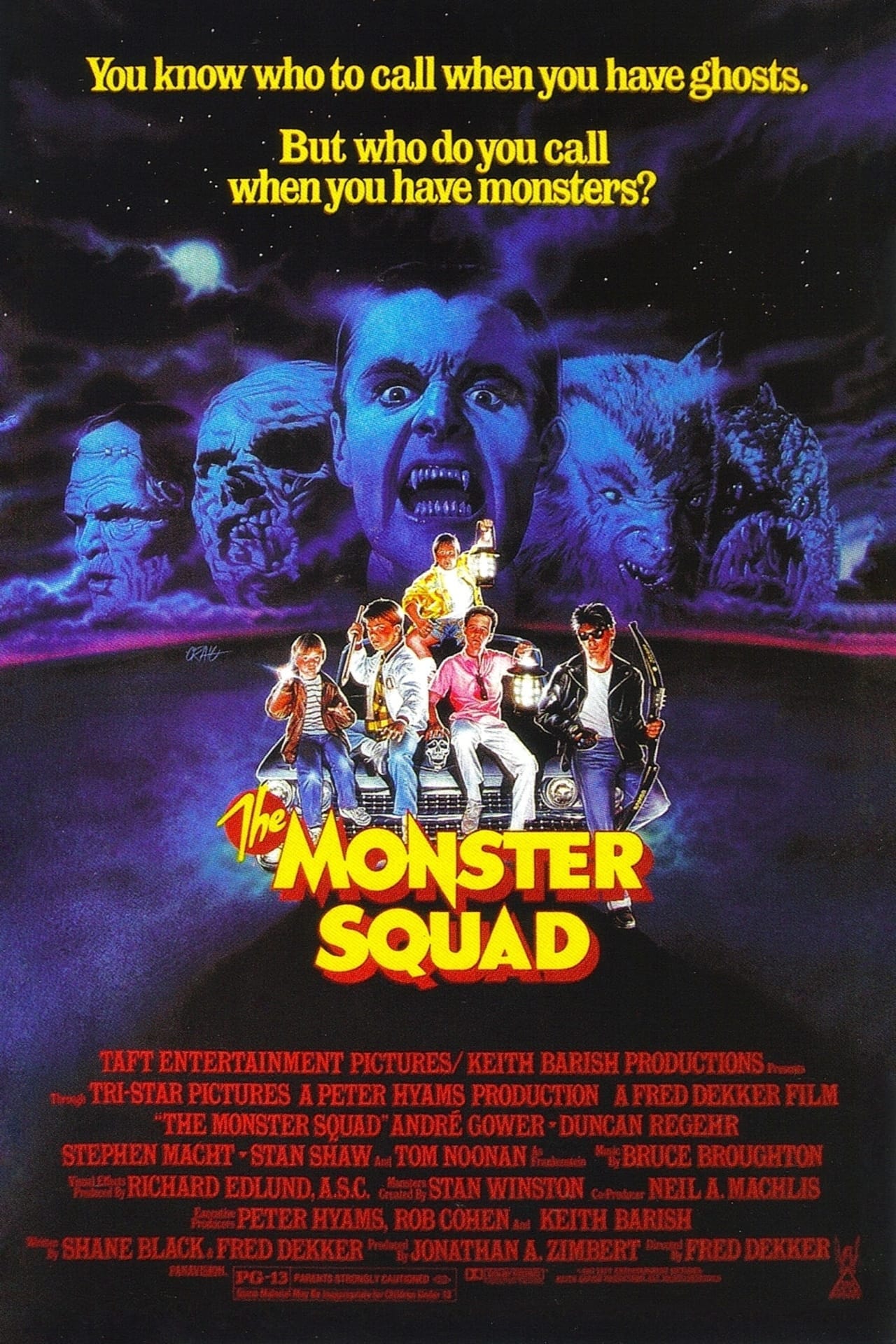A Listicle of Some of the Best Films of 1987
For many, the films of 1987 are intertwined with personal memories and experiences. Whether it was the thrill of watching Predator in a darkened theater, the laughter shared during Spaceballs, or the emotional journey of Dirty Dancing, these movies have l
For many, the films of 1987 are intertwined with personal memories and experiences. Whether it was the thrill of watching Predator in a darkened theater, the laughter shared during Spaceballs, or the emotional journey of Dirty Dancing, these movies have left an indelible mark on our lives. They represent a time when cinema was not just an art form but a communal experience, bringing people together to share stories and emotions.
Iconic Films of 1987
The year 1987 is often remembered for its exceptional lineup of films, each contributing uniquely to the cinematic landscape. This section explores several iconic films that defined the year and examines why they have stood the test of time.
The Lost Boys
The Lost Boys redefined the vampire genre with its blend of horror, teen drama, and a killer soundtrack. Directed by Joel Schumacher, the film introduced a new, edgier take on vampires, making them both terrifying and cool. The story of a group of teenage vampires in a small California town captivated audiences and has since become a cult classic.
The film’s unique approach to the vampire mythos combined elements of horror with the rebellious spirit of the 1980s youth culture. The cast, featuring young talents like Corey Haim, Corey Feldman, and Kiefer Sutherland, brought charisma and energy to their roles, making the characters both relatable and iconic. The soundtrack, featuring bands like INXS and Echo & the Bunnymen, further cemented the film’s place in pop culture.
Lethal Weapon
Richard Donner's Lethal Weapon paired Mel Gibson and Danny Glover in a thrilling buddy cop film that set the standard for the genre. The chemistry between the leads, combined with sharp writing and intense action sequences, made it an instant hit and spawned a successful franchise.
The film's success lies in its perfect balance of action and character development. Gibson’s portrayal of the troubled yet skilled cop Martin Riggs provided depth and complexity, while Glover’s depiction of the seasoned and family-oriented Roger Murtaugh added a grounded and relatable element. The film’s action sequences, choreographed with precision and intensity, kept audiences on the edge of their seats.
Predator
John McTiernan's Predator showcased Arnold Schwarzenegger at his peak, pitting him against one of the most formidable extraterrestrial foes in cinema history. The film's blend of action, horror, and science fiction, along with groundbreaking special effects, has ensured its status as a genre-defining classic.
The film’s setting in the dense jungles of Central America created a claustrophobic and suspenseful atmosphere. The predator itself, designed by Stan Winston, became an iconic movie monster, blending advanced technology with primal savagery. Schwarzenegger’s commanding presence and the film’s relentless pacing made it a thrilling cinematic experience.
Mannequin
Mannequin, directed by Michael Gottlieb, is a romantic comedy that tells the whimsical story of a young artist who falls in love with a mannequin that comes to life. The film's charm lies in its light-hearted narrative and the chemistry between its leads, Andrew McCarthy and Kim Cattrall.
The film’s playful premise and feel-good storyline offered a refreshing escape for audiences. The romantic comedy genre thrived on such imaginative narratives, and Mannequin stood out for its unique blend of fantasy and romance. The film's humor and heartwarming moments made it a beloved addition to 1987’s cinematic offerings.
A Nightmare on Elm Street 3: Dream Warriors
Wes Craven’s A Nightmare on Elm Street 3: Dream Warriors reinvigorated the horror franchise with its imaginative storyline and inventive special effects. This installment brought back Heather Langenkamp’s character and introduced a group of teens who fight Freddy Krueger together in their dreams, making it one of the most beloved sequels in the series.
The film’s creative approach to the dream sequences allowed for visually stunning and psychologically intense scenes. The concept of teenagers banding together to confront their fears added a layer of empowerment and camaraderie to the horror narrative. Freddy Krueger’s character, portrayed by Robert Englund, continued to captivate and terrify audiences with his blend of humor and malevolence.
Raising Arizona
The Coen Brothers' Raising Arizona is a quirky comedy that tells the story of an ex-con and an ex-cop who kidnap a baby to start a family. The film’s unique humor, fast-paced dialogue, and memorable performances by Nicolas Cage and Holly Hunter have made it a cult favorite.
The Coen Brothers’ distinctive style, characterized by eccentric characters and sharp wit, shone brightly in this film. Raising Arizona blended slapstick comedy with heartfelt moments, creating a narrative that was both absurd and endearing. The film’s visual style, marked by inventive camera work and vibrant color palettes, further enhanced its appeal.
The Secret of My Success
The Secret of My Success, directed by Herbert Ross, is a comedy that follows Michael J. Fox as a young man who climbs the corporate ladder by assuming a false identity. The film’s satirical take on corporate America and Fox’s charismatic performance resonated with audiences.
The film captured the zeitgeist of the 1980s, reflecting societal aspirations and critiques of the corporate world. Fox’s portrayal of the ambitious yet ethical protagonist made the character relatable and inspiring. The film’s humor and commentary on ambition and success struck a chord with audiences navigating the complexities of the business world.
G.I. Joe: The Movie
G.I. Joe: The Movie brought the popular toy line and animated series to the big screen, delivering an action-packed adventure that thrilled young fans. The film’s animation and story captured the essence of the G.I. Joe universe, making it a nostalgic favorite for those who grew up in the 1980s.
The film expanded on the characters and storylines familiar to fans of the TV series, providing a grander scale and higher stakes. The animation quality and dynamic action sequences made it a visually engaging experience. G.I. Joe: The Movie catered to the imagination and adventurous spirit of its young audience, solidifying its place in 1980s pop culture.
The Chipmunk Adventure
The Chipmunk Adventure, directed by Janice Karman, took the beloved characters Alvin, Simon, and Theodore on a globetrotting adventure. The film’s catchy songs and fun storyline made it a hit with children and families.
The film’s vibrant animation and engaging musical numbers appealed to a wide range of audiences. The adventurous plot, involving a race around the world, provided excitement and entertainment. The Chipmunk Adventure successfully translated the charm of the animated TV series to the big screen, creating a delightful cinematic experience.
Ernest Goes to Camp
Ernest Goes to Camp, directed by John R. Cherry III, introduced audiences to the bumbling but lovable character Ernest P. Worrell, played by Jim Varney. The film’s slapstick humor and heartwarming moments made it a beloved entry in the Ernest series.
The film’s appeal lay in its blend of comedy and heart. Varney’s portrayal of Ernest was endearing and hilarious, making the character an instant favorite. The film’s themes of friendship, perseverance, and redemption resonated with audiences, adding depth to the comedic narrative.
Harry and the Hendersons
Harry and the Hendersons, directed by William Dear, is a family comedy about a family that adopts a friendly Sasquatch. The film’s blend of humor, heart, and impressive creature effects made it a box office success and an enduring favorite.
The film’s central theme of accepting and embracing differences was conveyed through the heartwarming relationship between the family and Harry, the Sasquatch. The creature effects, which won an Academy Award for Best Makeup, brought Harry
to life in a convincing and endearing manner. The film’s humor and message of compassion and understanding made it a memorable family film.
The Untouchables
Brian De Palma’s The Untouchables is a gripping crime drama about the battle between Eliot Ness and Al Capone during Prohibition. The film’s stellar cast, including Kevin Costner, Sean Connery, and Robert De Niro, and its stylish direction made it a critical and commercial hit.
The film’s success can be attributed to its compelling narrative and strong performances. Connery’s role as Malone earned him an Academy Award for Best Supporting Actor. De Palma’s direction, combined with Ennio Morricone’s iconic score, created a tense and atmospheric crime thriller. The Untouchables stood out for its portrayal of heroism and justice in a corrupt world.
The Witches of Eastwick
The Witches of Eastwick, directed by George Miller, is a dark comedy that stars Jack Nicholson, Cher, Susan Sarandon, and Michelle Pfeiffer. The film’s story of three women who gain magical powers and the charismatic devil who disrupts their lives was both funny and thought-provoking.
The film’s exploration of female empowerment and independence was woven into a narrative filled with humor and supernatural elements. Nicholson’s portrayal of the devilish Daryl Van Horne was charismatic and menacing, providing a perfect foil to the strong performances by Cher, Sarandon, and Pfeiffer. The film’s blend of comedy, drama, and fantasy made it a standout in 1987.
Roxanne
Steve Martin starred in and wrote Roxanne, a modern retelling of Cyrano de Bergerac. Directed by Fred Schepisi, the film’s witty script and heartfelt performances made it a romantic comedy standout.
Martin’s adaptation retained the charm and humor of the original story while updating it for contemporary audiences. His performance as the big-nosed but eloquent C.D. Bales was both comedic and touching. The film’s themes of love, self-acceptance, and inner beauty resonated with audiences, making it a beloved romantic comedy.
Dragnet
Dragnet, directed by Tom Mankiewicz, is a comedic take on the classic TV series, starring Dan Aykroyd and Tom Hanks. Despite mixed reviews, the film’s humorous approach to police procedural tropes found an audience.
Aykroyd’s portrayal of the straight-laced Joe Friday contrasted perfectly with Hanks’s more relaxed and humorous character, Pep Streebek. The film’s satire of law enforcement and its playful nods to the original series provided entertainment and nostalgia for fans. Dragnet’s comedic spin on the crime genre added variety to 1987’s film offerings.
Spaceballs
Mel Brooks' Spaceballs parodied the science fiction genre with wit and humor, showcasing Brooks' talent for satire. The film’s inventive comedy and clever references to iconic sci-fi films have made it a lasting favorite among fans of the genre.
Brooks’s ability to blend absurd humor with sharp satire was on full display in Spaceballs. The film’s characters, such as Dark Helmet and Lone Starr, became iconic in their own right. The playful parody of films like Star Wars provided a fresh and humorous perspective on the sci-fi genre, cementing Spaceballs as a cult classic.
Adventures in Babysitting
Chris Columbus’s Adventures in Babysitting is a comedy about a suburban babysitter who has an unexpectedly wild night in the city. The film’s fun, adventurous spirit and memorable characters made it a hit with audiences.
The film’s narrative, filled with misadventures and unexpected challenges, provided a thrilling and humorous ride. Elisabeth Shue’s performance as the resourceful babysitter added charm and relatability to the story. Adventures in Babysitting captured the essence of teenage adventure and resilience, making it a beloved film.
The Brave Little Toaster
The Brave Little Toaster, directed by Jerry Rees, is an animated film about household appliances on a journey to find their owner. Its imaginative story and emotional depth have earned it a special place in the hearts of viewers.
The film’s unique premise and endearing characters, such as Toaster, Lampy, and Blanky, made it a standout in the realm of animated films. The story’s themes of loyalty, friendship, and perseverance resonated with audiences of all ages. The Brave Little Toaster showcased the power of animation to convey heartfelt and meaningful stories.
Full Metal Jacket
Stanley Kubrick's Full Metal Jacket provided a harrowing and unflinching look at the Vietnam War, distinguished by its intense performances and stark realism. The film's artistic achievements and powerful storytelling continue to resonate with audiences and filmmakers alike.
The film’s dual-structure narrative, depicting both the brutal training at boot camp and the horrors of combat, offered a comprehensive portrayal of the dehumanizing effects of war. Kubrick’s meticulous direction and the strong performances, particularly by R. Lee Ermey and Vincent D’Onofrio, created a deeply affecting and thought-provoking film. Full Metal Jacket remains a significant entry in the war film genre.
Robocop
Directed by Paul Verhoeven, Robocop offered a satirical look at capitalism and corporate greed through the lens of a gritty, futuristic action movie. The film’s innovative use of special effects and its darkly humorous take on society set it apart as a groundbreaking work.
The film’s dystopian vision of a crime-ridden Detroit controlled by a powerful corporation provided a stark commentary on contemporary social issues. The character of RoboCop, portrayed by Peter Weller, embodied themes of humanity and identity in the face of technological advancement. Robocop’s blend of action, satire, and social critique made it a standout film.
Snow White and the Seven Dwarfs (re-released)
The re-release of Snow White and the Seven Dwarfs allowed a new generation to experience Disney’s classic animated film. The timeless story and groundbreaking animation continued to captivate audiences.
The re-release highlighted the enduring appeal of Disney’s first feature-length animated film. The film’s enchanting story, memorable characters, and pioneering animation techniques remained as impactful in 1987 as they were in 1937. The re-release of Snow White and the Seven Dwarfs reinforced its status as a foundational work in the history of animation.
La Bamba
La Bamba, directed by Luis Valdez, is a biographical film about the life of rock and roll star Ritchie Valens. The film’s portrayal of Valens’s rise to fame and tragic death, along with its memorable soundtrack, made it a powerful tribute to the musician.
The film’s focus on Valens’s Mexican-American heritage and his impact on the music industry provided a meaningful exploration of cultural identity and artistic achievement. Lou Diamond Phillips’s performance as Valens was both heartfelt and compelling. The film’s music, including Valens’s hits like “La Bamba” and “Donna,” added to its emotional resonance.
The Care Bears Adventure in Wonderland
The Care Bears Adventure in Wonderland brought the beloved characters into a whimsical new story inspired by Lewis Carroll’s classic. The film’s colorful animation and positive messages appealed to young viewers.
The film’s imaginative adaptation of Alice in Wonderland provided a fresh and engaging narrative for fans of the Care Bears. The vibrant animation and uplifting themes of friendship and kindness resonated with its target audience. The Care Bears Adventure in Wonderland added to the charm and appeal of the Care Bears franchise.
Masters of the Universe
Masters of the Universe, directed by Gary Goddard, brought the popular toy line and animated series to life with a live-action film. Despite its mixed reception, the film’s campy charm and imaginative world have garnered a cult following.
The film’s portrayal of iconic characters like He-Man and Skeletor provided a nostalgic thrill for fans of the franchise. The film’s blend of fantasy and science fiction elements created a unique and visually engaging narrative. Masters of the Universe’s enduring cult status speaks to its impact on fans and its place in 1980s pop culture.
Can’t Buy Me Love
Steve Rash’s Can’t Buy Me Love is a teen romantic comedy about a high school nerd who pays a popular girl to pose as his girlfriend. The film’s exploration of social status and its endearing characters resonated with young audiences.
The film’s narrative, which highlighted themes of self-discovery and the importance of genuine relationships, resonated with its teenage audience. Patrick Dempsey’s portrayal of the protagonist’s transformation and growth added depth to the character. Can’t Buy Me Love captured the complexities of teenage life and the desire for acceptance and identity.
The Monster Squad
The Monster Squad, directed by Fred Dekker, is a horror comedy that brings together a group of kids to fight classic movie monsters. The film’s blend of humor, horror, and nostalgia has made it a cult favorite.
The film’s homage to classic Universal monsters like Dracula, Frankenstein, and the Wolfman provided a nostalgic thrill for horror fans. The camaraderie and bravery of the young protagonists added a relatable and engaging element to the narrative. The Monster Squad’s blend of humor and horror created a unique and memorable film experience.
Dirty Dancing
Dirty Dancing, directed by Emile Ardolino, became a cultural phenomenon, thanks to its compelling love story, dance sequences, and iconic soundtrack. The film’s themes of love, rebellion, and social class resonated deeply with audiences, making it a beloved classic that continues to inspire new generations.
The film’s portrayal of the transformative power of dance and romance struck a chord with viewers. Jennifer Grey’s performance as Baby and Patrick Swayze’s charismatic turn as Johnny created an unforgettable on-screen chemistry. The film’s music, including the hit song “(I’ve Had) The Time of My Life
,” became an integral part of its appeal. Dirty Dancing’s enduring popularity and cultural impact are testaments to its timeless story and emotional resonance.
Hellraiser
Clive Barker’s Hellraiser introduced audiences to the terrifying world of the Cenobites and their leader, Pinhead. The film’s unique blend of horror and dark fantasy, along with its striking visual effects, has made it a landmark in the horror genre.
The film’s exploration of themes like pain, pleasure, and obsession provided a psychological depth that set it apart from typical horror fare. The character of Pinhead, portrayed by Doug Bradley, became an iconic figure in horror cinema. Hellraiser’s imaginative and disturbing visuals, combined with its philosophical undertones, created a lasting impact on the genre.
Baby Boom
Baby Boom, directed by Charles Shyer, is a comedy about a career woman who inherits a baby and must balance her professional and personal life. The film’s humorous and heartfelt exploration of modern womanhood resonated with many viewers.
The film’s portrayal of the challenges and rewards of balancing a career and family life provided a relatable and engaging narrative. Diane Keaton’s performance as the determined and resourceful protagonist added depth and charm to the character. Baby Boom’s themes of empowerment and adaptation resonated with audiences navigating similar life challenges.
The Running Man
Paul Michael Glaser’s The Running Man, based on a Stephen King novel, is a dystopian action film starring Arnold Schwarzenegger. The film’s critique of reality TV and its high-octane action scenes have made it a memorable entry in the sci-fi genre.
The film’s portrayal of a dystopian future where reality TV becomes a deadly game provided a sharp commentary on media and society. Schwarzenegger’s commanding presence and the film’s intense action sequences created an engaging and thrilling narrative. The Running Man’s exploration of themes like power, manipulation, and survival added depth to its action-packed storyline.
The Jetsons Meet the Flintstones
The Jetsons Meet the Flintstones is an animated crossover that brings together two of Hanna-Barbera’s most beloved families. The film’s nostalgic appeal and fun storyline delighted fans of both series.
The film’s playful blending of futuristic and prehistoric settings provided a unique and entertaining narrative. The interactions between the Jetsons and the Flintstones added humor and novelty to the story. The Jetsons Meet the Flintstones offered a delightful and nostalgic experience for fans of the animated series.
The Last Emperor
Bernardo Bertolucci’s The Last Emperor is an epic biographical film about the life of Puyi, the last Emperor of China. The film’s sweeping visuals, intricate storytelling, and historical significance earned it critical acclaim and multiple Academy Awards.
The film’s meticulous production design and cinematography created a visually stunning portrayal of China’s history. The narrative’s exploration of Puyi’s life, from imperial opulence to political turmoil, provided a compelling and emotional journey. The Last Emperor’s critical and commercial success highlighted its significance as a cinematic masterpiece.
Planes, Trains, and Automobiles
John Hughes’ Planes, Trains, and Automobiles is a comedy about two mismatched travelers trying to get home for Thanksgiving. The film’s hilarious misadventures and heartfelt moments, along with standout performances by Steve Martin and John Candy, have made it a holiday classic.
The film’s blend of humor and heart created a relatable and engaging narrative. Martin and Candy’s performances as the uptight Neal and the lovable Del provided a perfect balance of comedy and emotion. The film’s exploration of themes like friendship, patience, and understanding added depth to its comedic storyline. Planes, Trains, and Automobiles has become a beloved film for its humor and holiday spirit.
Throw Momma from the Train
Throw Momma from the Train, directed by Danny DeVito, is a dark comedy inspired by Hitchcock’s Strangers on a Train. The film’s twisted humor and memorable performances made it a unique addition to the year’s lineup.
The film’s narrative, involving a murder pact between two strangers, provided a darkly comedic twist on the classic thriller. DeVito’s direction and performance, along with Billy Crystal’s portrayal of the neurotic writer, created a humorous and engaging dynamic. The film’s blend of dark comedy and suspense added a unique flavor to its storyline. Throw Momma from the Train stood out for its originality and humor.
Wall Street
Oliver Stone’s Wall Street provided a scathing critique of corporate greed and moral ambiguity, introducing the unforgettable character Gordon Gekko, played by Michael Douglas in an Oscar-winning performance. The film’s portrayal of the finance world remains relevant, influencing both cinema and real-world perceptions of Wall Street.
The film’s exploration of themes like ambition, corruption, and ethics provided a compelling and thought-provoking narrative. Douglas’s portrayal of Gekko, with his iconic line “Greed is good,” captured the allure and danger of unchecked ambition. The film’s impact on both popular culture and the financial industry highlighted its significance. Wall Street’s critical success and enduring relevance underscore its importance as a cinematic work.
*batteries not included
batteries not included, directed by Matthew Robbins, is a science fiction film about tiny alien robots that help the residents of a struggling apartment building. The film’s heartwarming story and imaginative special effects made it a charming family favorite.
The film’s narrative, involving the community coming together with the help of the friendly robots, provided a feel-good and inspiring story. The special effects and design of the alien robots added a magical and whimsical element to the film. batteries not included’s themes of hope, unity, and resilience resonated with audiences, making it a beloved family film.
Eddie Murphy Raw
Eddie Murphy Raw is a stand-up comedy film showcasing Eddie Murphy at the height of his comedic powers. The film’s sharp, often controversial humor and Murphy’s charismatic performance made it a significant entry in the stand-up genre.
The film’s raw and unfiltered approach to comedy provided a bold and impactful performance. Murphy’s commentary on various social and personal topics showcased his comedic talent and fearless style. Eddie Murphy Raw’s success highlighted Murphy’s influence in the comedy world and his ability to captivate audiences with his humor.
Moonstruck
Norman Jewison’s Moonstruck is a romantic comedy about an Italian-American widow who falls in love with her fiancé’s brother. The film’s rich characters, witty script, and Cher’s Oscar-winning performance made it a critical and commercial success.
The film’s exploration of love, family, and cultural identity provided a heartfelt and engaging narrative. Cher’s portrayal of the passionate and determined Loretta added depth and charm to the character. The film’s themes of fate, romance, and family dynamics resonated with audiences, making Moonstruck a beloved romantic comedy.
Good Morning, Vietnam
Barry Levinson’s Good Morning, Vietnam stars Robin Williams as a radio DJ during the Vietnam War. The film’s blend of comedy and drama, along with Williams’s dynamic performance, made it a standout film of the year.
The film’s narrative, combining humor with the harsh realities of war, created a unique and impactful story. Williams’s portrayal of the irreverent and charismatic DJ provided both laughter and poignant moments. The film’s exploration of themes like freedom of expression and the human impact of war added depth to its comedic elements. Good Morning, Vietnam remains a significant film for its blend of comedy and social commentary.
Three Men and a Baby
Three Men and a Baby, directed by Leonard Nimoy, is a comedy about three bachelors who find themselves caring for an infant. The film’s humorous and heartwarming storyline, along with its strong ensemble cast, made it the highest-grossing film of 1987.
The film’s narrative, involving the three men adapting to fatherhood and the challenges it brings, provided a humorous and relatable story. The performances by Tom Selleck, Steve Guttenberg, and Ted Danson created a charming and engaging dynamic. The film’s exploration of themes like responsibility, friendship, and love resonated with audiences. Three Men and a Baby’s commercial success and enduring appeal highlight its impact as a family comedy.
Cultural Impact and Legacy
The films of 1987 have had a lasting influence on popular culture, shaping everything from fashion to music to catchphrases. Dirty Dancing is a prime example, as it not only became a box office hit but also a cultural phenomenon. The film’s compelling love story, dance sequences, and iconic soundtrack struck a chord with audiences, and its themes of love, rebellion, and social class resonated deeply. Songs like "(I've Had) The Time of My Life" became anthems, and the film's dance scenes were widely emulated.
The Princess Bride also left an indelible mark on popular culture. Its mix of romance, adventure, and humor, along with its endlessly quotable dialogue, has ensured its place in the pantheon of classic films. Lines like "Inconceivable!" and "As you wish" have entered the cultural lexicon, and the film's characters, such as Westley and Inigo Montoya, remain iconic figures.
The impact of these films extended beyond immediate box office success, influencing subsequent generations of filmmakers and storytellers. For instance, Predator and RoboCop pushed the boundaries of science fiction and action with their innovative special effects and storytelling. These films not only entertained but also sparked discussions about technology, corporate power, and the human condition. Full Metal Jacket, directed by Stanley Kubrick, offered a new perspective on war films, combining stark realism with psychological depth, and has influenced numerous war films that followed.
Influence on Popular Culture
The films of 1987 have had a lasting influence on popular culture, shaping
everything from fashion to music to catchphrases. Dirty Dancing popularized dance scenes and soundtracks that became cultural touchstones. The Princess Bride provided a treasure trove of quotable lines that are still referenced today.
The fashion and style seen in films like The Lost Boys and Lethal Weapon reflected and influenced the trends of the late 1980s. The rebellious and edgy looks in The Lost Boys became iconic, embodying the spirit of the decade. Similarly, the buddy cop dynamic and action sequences in Lethal Weapon set a template for future films in the genre.
Contributions to Film Genres
1987’s movies contributed significantly to the evolution of various film genres. Predator and RoboCop pushed the boundaries of science fiction and action with their innovative special effects and storytelling. These films not only entertained but also sparked discussions about technology, corporate power, and the human condition. Full Metal Jacket, directed by Stanley Kubrick, offered a new perspective on war films, combining stark realism with psychological depth, and has influenced numerous war films that followed.
Horror and fantasy genres also saw significant contributions. A Nightmare on Elm Street 3: Dream Warriors reinvigorated the horror franchise with its imaginative storyline and inventive special effects. Hellraiser introduced a new level of psychological horror, blending dark fantasy elements with intense and disturbing visuals. The Princess Bride combined elements of fantasy, romance, and comedy, creating a timeless classic that transcended genre boundaries.
Enduring Popularity
Many films from 1987 continue to enjoy enduring popularity, regularly appearing in retrospectives and being rediscovered by new generations. The timeless appeal of these movies speaks to their quality and the skill of the filmmakers involved.
Films like Dirty Dancing, The Princess Bride, and Lethal Weapon have remained cultural touchstones, beloved by audiences young and old. The quotable lines, memorable characters, and compelling narratives have ensured their place in the annals of cinematic history. These films continue to be celebrated for their contributions to cinema and their impact on popular culture.
Technological and Artistic Innovations
The year 1987 was marked by significant advancements in special effects and narrative techniques, which contributed to the lasting appeal of its films. RoboCop, directed by Paul Verhoeven, is a prime example of this. The film offered a satirical look at capitalism and corporate greed through the lens of a gritty, futuristic action movie. Its innovative use of special effects and its darkly humorous take on society set it apart as a groundbreaking work.
Special Effects
1987 saw significant advancements in special effects, with films like RoboCop and Predator showcasing groundbreaking techniques that set new standards for the industry. These innovations paved the way for future blockbusters, demonstrating the potential of technology to enhance storytelling.
RoboCop’s practical effects, including the design and portrayal of the titular character, combined with cutting-edge visual effects to create a realistic and immersive world. The film’s depiction of a dystopian future and the integration of technology into human bodies raised thought-provoking questions about identity and humanity.
Predator featured one of the most iconic movie monsters in cinema history. The creature’s design, created by Stan Winston, combined advanced animatronics and practical effects to bring the alien hunter to life. The film’s use of thermal vision and cloaking technology added to the suspense and innovation, making it a standout in the action and sci-fi genres.
Narrative Techniques
The films of 1987 also experimented with narrative techniques, blending genres and pushing the boundaries of conventional storytelling. Full Metal Jacket used a dual-structure narrative to depict the dehumanizing effects of war, offering a comprehensive and deeply affecting portrayal of the Vietnam War. Kubrick’s meticulous direction and the strong performances, particularly by R. Lee Ermey and Vincent D’Onofrio, created a deeply affecting and thought-provoking film. Full Metal Jacket remains a significant entry in the war film genre.
Other films, like The Last Emperor, demonstrated artistic achievements through their meticulous production design and sweeping visuals. This epic biographical film about the life of Puyi, the last Emperor of China, combined intricate storytelling with historical significance, earning critical acclaim and multiple Academy Awards. The film’s exploration of themes like power, identity, and transformation provided a rich and compelling narrative.
Artistic Achievements
From the meticulous production design of The Last Emperor to the dynamic direction of Lethal Weapon, the artistic achievements of 1987’s films are noteworthy. These movies displayed a high level of craftsmanship, contributing to their lasting impact and critical acclaim.
The use of practical effects and innovative techniques in films like Predator and RoboCop set new standards for visual storytelling. The detailed production design and historical accuracy in The Last Emperor created a visually stunning and emotionally resonant portrayal of China’s history. The sharp writing and character development in films like Lethal Weapon and The Princess Bride showcased the importance of narrative and dialogue in creating memorable and impactful films.
1987 was undeniably one of the best years for movies. The combination of groundbreaking films, talented directors and actors, and significant cultural impact makes it a standout year in the history of cinema. These films continue to resonate with audiences, old and new, proving the timeless nature of great storytelling. Whether through the thrilling action of Predator, the enchanting romance of The Princess Bride, or the gritty realism of Full Metal Jacket, the films of 1987 have left an indelible mark on the world of movies. Their legacy lives on, reminding us of the power of cinema to entertain, inspire, and transform.

